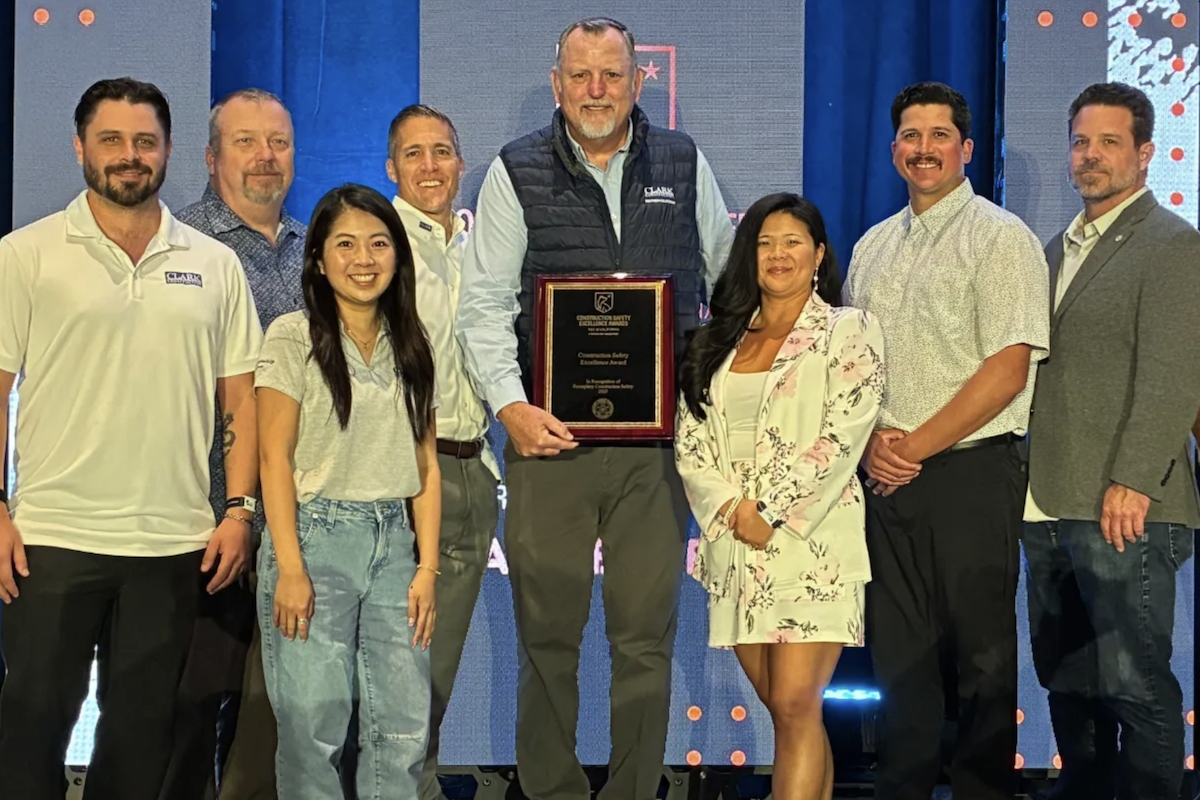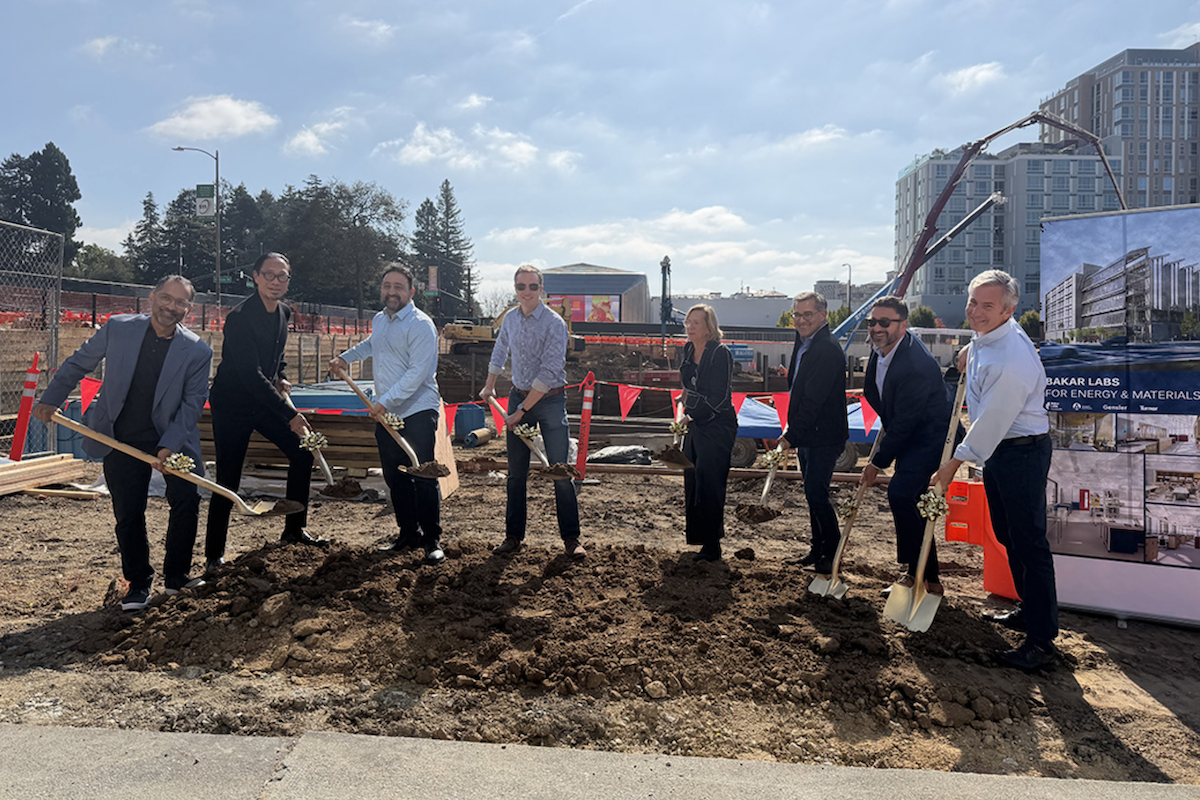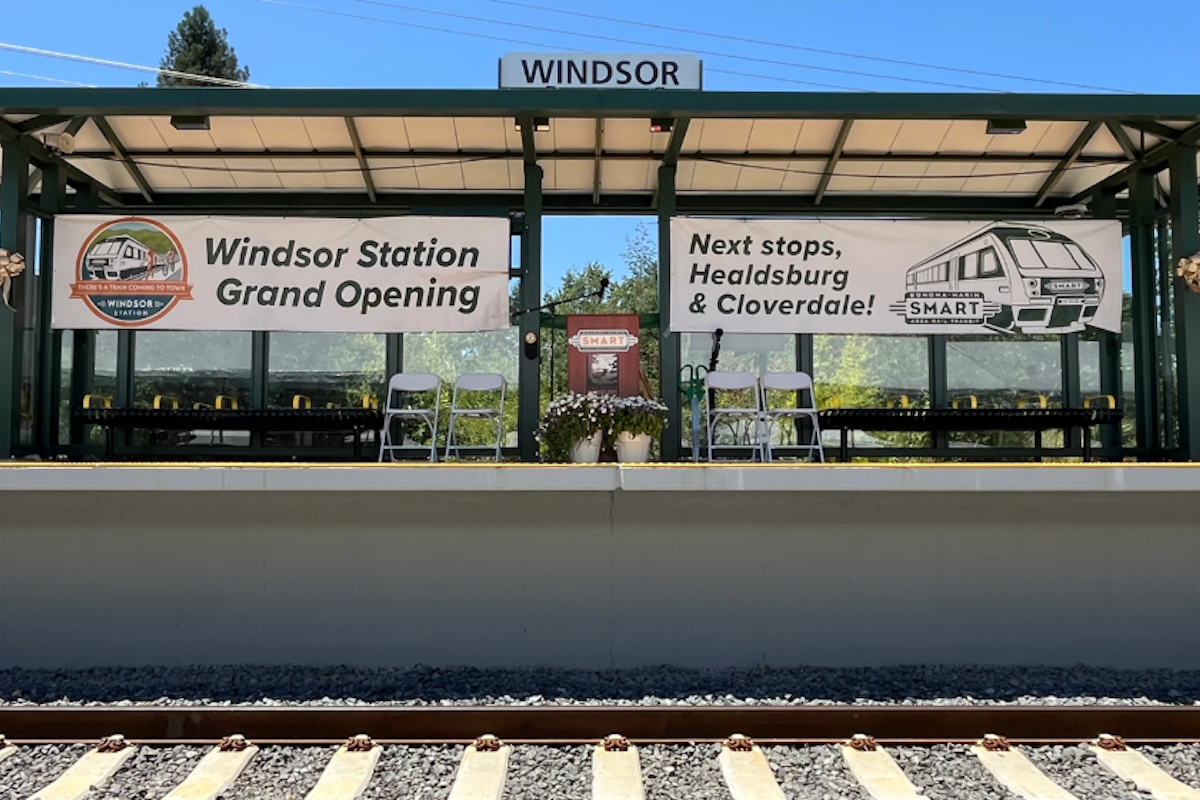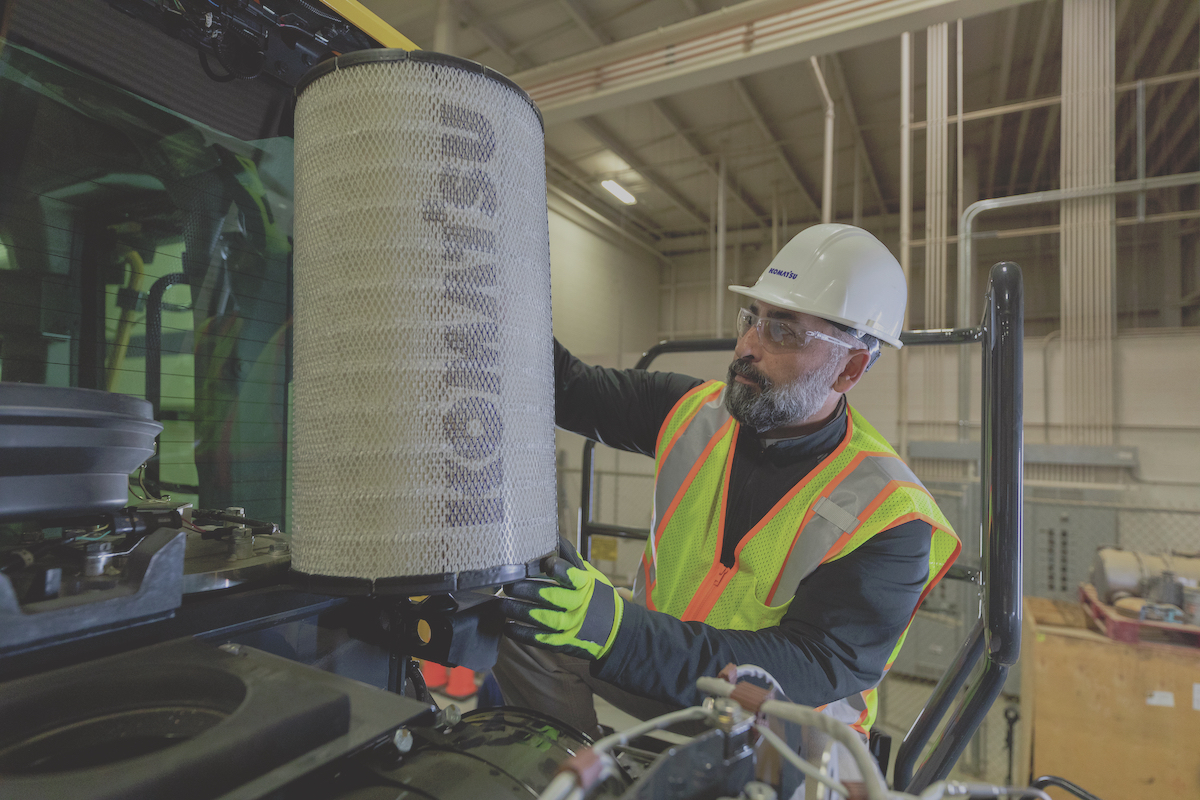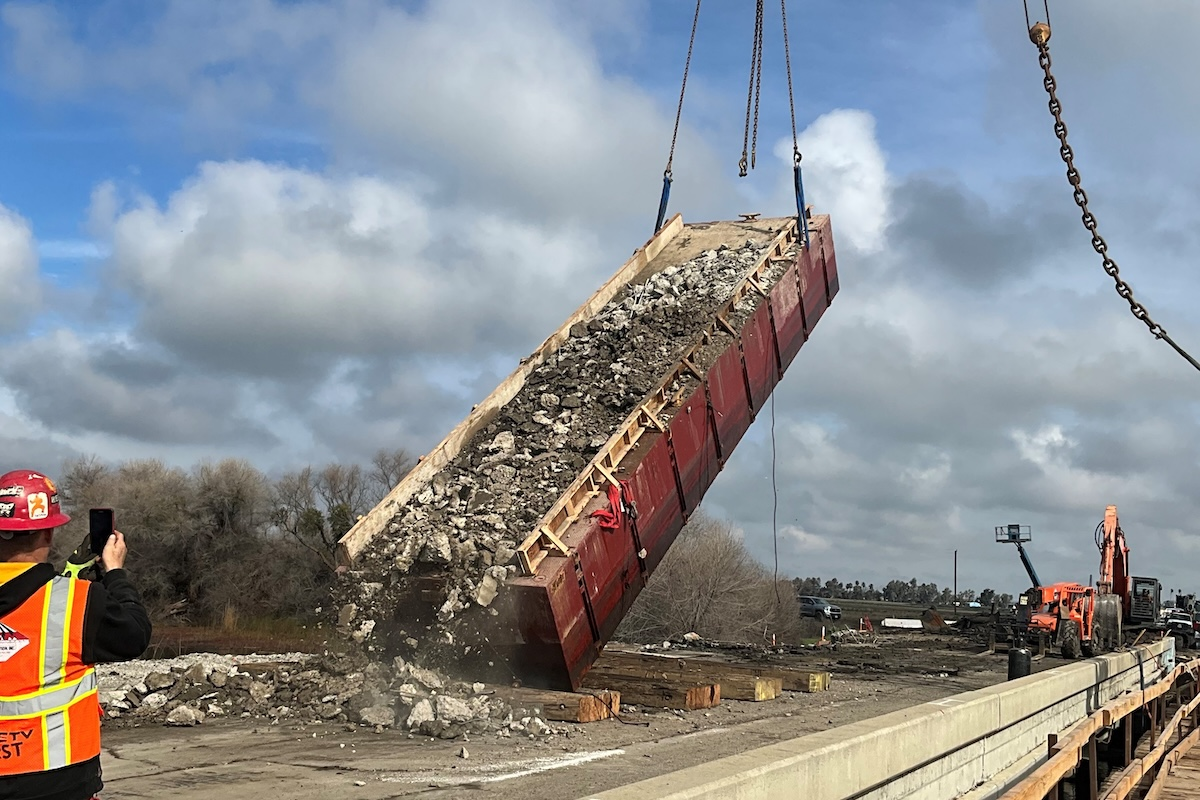In the heart of the Pigeon River Gorge, nestled between the Great Smoky Mountains and the Cherokee National Forest, Kiewit and the North Carolina Department of Transportation (NCDOT) are in the middle of a bridge replacement project. Drivers can traverse the Pigeon River Gorge on Interstate 40 (I-40), a major east-west transcontinental Interstate Highway.
Each of the five bridges being replaced on I-40 is either structurally deficient or functionally obsolete (not up to the current standards). NCDOT often performs maintenance on the bridge decks due to their poor condition. The bridges are spread over a 13-mile stretch of I-40.
The five bridges, which have four lanes, are located on the western section of I-40 in North Carolina. The old bridges have limited shoulders. Because they did not have adequate shoulder width, performing preservation activities such as overlays and bridge deck replacements was a burden, with bridges closing when work had to be performed. The new bridges will include widened shoulders.
"These bridges, built in the 1960s, are showing their age and no longer meet modern standards," said Josh Deyton, NCDOT Division 14 Construction Engineer. "Our goal is to ensure they serve the community for decades to come."
With traffic on I-40 increasing by 43 percent over the past 15 years, the need for modern, robust structures has never been greater. The growth is expected to continue, as the average daily traffic in 2020 was 24,500 (23 percent is truck traffic) and is projected to reach 49,000 in 2040.

| Your local Trimble Construction Division dealer |
|---|
| SITECH Southwest |
| SITECH West |
The area is home to significant wildlife, with black bears, deer, and elk being particularly prominent. The growing traffic has led to a rise in wildlife mortality caused by vehicle collisions. Minimizing animal-vehicle collisions is also driving the project.
Working in a remote location presents significant logistical challenges.
"Getting staff and equipment to the site required meticulous planning," Kiewit Project Manager Luke Silvus said. "We hire as many local people as possible and then supplement the remaining need with our loyal craft following, who travel with us to our most challenging projects.”
Getting equipment to the project area and working in the gorge is another challenge. Silvus said it requires lots of planning. The team put in access roads where possible and constructed a temporary bridge to get equipment to one of the bridges.

| Your local Gomaco dealer |
|---|
| Terry Equipment |
The most significant challenge, however, was the requirement to keep the freight corridor fully functional during the peak travel season.
To add another wrinkle, the primary work time occurs during winter. During January 2023, the area just missed setting a record for rainfall.
In order to lay asphalt and concrete in the winter, Kiewit had to take a few extra steps. Only one concrete company and one asphalt company are near the project area.
“We reached out to the area concrete company and asphalt company and partnered with them,” Silvus said. “We brought them to help with planning and preconstruction.” The companies agreed to keep one plant open during the winter, which they normally close, just for the project on the I-40 bridges.

| Your local Trimble Construction Division dealer |
|---|
| SITECH Southwest |
| SITECH West |
Kiewit and its partners also designed a winter concrete plan. They developed heating systems to force warm air onto the concrete so it could properly cure rather than freeze.
NCDOT decided to use the Construction Manager/General Contractor (CMGC) contract model for this $201 million, fully state-funded project. It is the state’s first time using CMGC, and the decision to do so was deliberate.
"Having the contractor and designer involved early on has been crucial," Deyton said, crediting this model as one of the keys to keeping the project on track. "It's allowed us to address issues quickly.”
“Thoughtful and careful planning was critical for this project,” Silvus said. “Which is why the delivery model for this project is so important. Because this job is a CMGC, Kiewit was able to get involved from the onset, which enabled us to put our abundance of resources to use right away.”

| Your local Trimble Construction Division dealer |
|---|
| SITECH Southwest |
| SITECH West |
From the first project kickoff, task force meetings were set up to begin planning and designing for the safest, most cost-effective, and efficient way to build the new structures. All this, while keeping in mind that NCDOT needed the bridges to be robust structures that require less maintenance while providing a longer service life than the previous structures. Those early plans had to keep the corridor open to traffic through all construction phases.
The first of the five bridges Kiewit completed was done in one winter season. Kiewit then completed two more bridges during two off-seasons, one of the more challenging bridges being the Jonathan Creek Bridge, or the High Bridge.
To demolish the High Bridge, which was 100 feet tall and 600 feet long, Kiewit’s local demolition subcontractor, DH Griffin, used a high-reach demolition hammer to demolish the substructure. Protection was put in place over Jonathan Creek to protect the water from any debris.
To speed up the completion of High Bridge’s superstructure, the team used TyBOT, a rebar-tying robot designed to operate without any pre-programming required. TyBOT boosted productivity and completed 58,215 ties for this project across a 25,154-square-foot area, a rate of over 1,100 ties per hour.

| Your local Trimble Construction Division dealer |
|---|
| SITECH Southwest |
| SITECH West |
“To maximize the benefits TyBOT provided on this job, we reviewed the bridge specifications and ran an analysis to get an estimate for TyBOT’s projected performance,” said Danielle Proctor, CEO & President of Advanced Construction Robotics. “The type of information needed for this analysis includes the rebar type, tie requirements, and site specifications for configuration compatibility.”
The two remaining bridges — one over Pigeon River and one over Fines Creek Road — are tracking for on-time completion in October of 2026.
The Pigeon River Bridge requires the team to use a gantry crane system to erect 63-inch Florida I-Beam prestressed concrete girders.
“By utilizing prestressed girders, the pour sequence for the deck was accelerated, and this alternative led to the lowest risk to the schedule,” Deyton said. “Without this system, the contractor would not have been able to get a conventional crane large enough to lift these girders to work at this site.”

| Your local Trimble Construction Division dealer |
|---|
| SITECH Southwest |
| SITECH West |
The project also addresses a unique challenge — wildlife protection. The area is home to black bears, deer, and elk, leading to frequent wildlife-vehicle collisions. The new bridges will feature widened shoulders for safer travel and maintenance, as well as innovative wildlife fencing and pass-throughs.
Wildlife protections evolved from conversations with state and federal agencies, along with The Safe Passage Coalition.
"We consulted with industry experts to design solutions that protect both drivers and animals," Deyton said. "It's about creating a safer environment for everyone."
Begun in the fall of 2021, the five-year project is currently on schedule for completion in October 2026. “The right players together with this model fosters a collaborative atmosphere, so when problems arise, the team can quickly resolve them and keep the project moving,” Silvus said. “It’s been a good partnership.”

| Your local Trimble Construction Division dealer |
|---|
| SITECH Southwest |
| SITECH West |
NCDOT conducted a risk analysis workshop as part of the design processes for each phase of the project. The workshop included the contractor, designer, and cost estimator.
“As part of the workshop, we assigned a risk for each alternative in terms of the schedule,” Deyton said. “Some were better at delivering on time. ... We chose design alternatives that would facilitate advantages in the schedule while having the contractor, designer, and cost estimator at the table.”
As the project progresses, the benefits are clear. "When completed, these bridges will provide a safer, smoother, and more reliable route through this beautiful area," Silvus said. "Wildlife will benefit from improved connectivity, and NCDOT will see reduced maintenance demands."
- Owner: North Carolina Department of Transportation
- General Contractor: Kiewit Infrastructure South Co., Apex, North Carolina
- Designer: Benesch, Chicago, Illinois; Greg Stewart, PE, Project Engineer
- Other Key Contractors: D.T. Read Steel Co., Inc., Chesapeake, Virginia; ACR, Allison Park, Pennsylvania; HDR, Omaha, Nebraska






























